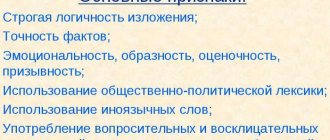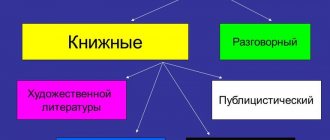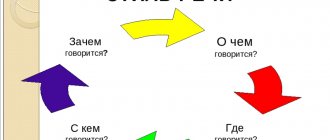| Kind of work: | Essay |
| Date added: | 21.01.2020 |
- This type of work is not a scientific work, it is not a finished final qualifying work!
- This type of work is a finished result of processing, structuring and formatting collected information intended for use as a source of material for independent preparation of educational work.
If you have a hard time understanding this topic, write to me on WhatsApp, we’ll look into your topic, agree on a deadline, and I’ll help you!
If you want to learn how to correctly carry out and write abstracts on any subject, then on the page “what is an abstract and how to do it” I wrote in detail.
Introduction
Depending on the area of application of the language, the content of the utterance, the situation and the goals of communication, several functional-stylistic varieties or styles are distinguished, which are characterized by a certain system of selection and organization of linguistic means in them.
Functional style is a historically established and socially conscious variety of written language (subsystem), which functions in a certain sphere of human activity and communication and is formed by the peculiarities of the use of linguistic means in this sphere and their specific organization.
The classification of styles is based on extralinguistic factors: the scope of language use, the object it defines and the purpose of communication. The areas of language use correspond to those types of human activity that correspond to the forms of social consciousness (science, law, politics, art).
Traditional and socially significant areas of activity are considered: scientific, economic (administrative and legal), socio-political, artistic. Accordingly, the styles of official (book) speech differ: scientific, official and business, journalistic, literary and artistic (artistic). They contrast with the style of informal speech - colloquial and everyday.
The literary and fictional style of speech in this classification stands apart, since the question of the legality of its isolation into a separate functional style has not yet been resolved, since it has sufficiently blurred the boundaries and can use the linguistic means of all other styles. A feature of this style is also the presence of various figurative and expressive means to convey a special quality - imagery.
Features of artistic style
The history of this style dates back to ancient times. Throughout time, a certain characteristic of such texts has developed, distinguishing them from other different styles. With the help of this style, authors of works have the opportunity to express themselves, convey to the reader their thoughts and reasoning, using all the richness of their language. Most often it is used in written speech, and in oral speech it is used when already created texts are read, for example, during the production of a play.
The purpose of artistic style is not to directly convey certain information, but to affect the emotional side of the person reading the work. However, this is not the only task of such a speech. Achieving established goals occurs when the functions of a literary text are fulfilled. These include:
- Figurative-cognitive, which consists of telling a person about the world and society using the emotional component of speech.
- Ideological and aesthetic, used to describe images that convey to the reader the meaning of the work.
- Communicative, in which the reader connects information from the text with reality.
Such functions of a work of art help the author to give meaning to the text so that it can fulfill all the tasks for which it was created for the reader.
Formal business style
Official business style is one of the book styles used in business relations, business papers, i.e. in laws, documents, acts, contracts, regulations, charters, official correspondence, etc.
The purpose of this style is to provide information and instructions. Officially, business style is characterized by accuracy, unambiguity, impersonality, standardization of text structure, and the mandatory nature of the text.
Official business style is characterized by the use of the following language tools:
at the vocabulary level:
- use of full names, exact dates;
- Book dictionary (due to, during, due to characteristics);
- use of words with direct meaning;
- Insufficient expressiveness and evaluative vocabulary;
- frequent use of verbal nouns (statement, use, performance);
- the presence of standardized transactions (come into force after expiration in the prescribed manner);
- limited possibilities of synonymous substitution, frequent lexical repetition;
- morphological
- The absence of personal pronouns, in particular 1st and 2nd persons, in the place of which proper names, surnames or special designations are used (manager, performer), as well as verbs in the form of 1st and 2nd persons;
at the syntactic level:
- complicating a simple sentence with isolated phrases, homogeneous members
- clear division of text into semantic blocks, usually using subheadings and digital paragraph layout
- The official business style is characterized by monologue methods of speech formation, as well as dialogue (a conversation between two people) or polylogue (a conversation between several people).
- Main genres: monologue - order, instruction, statement, statement, request, complaint (claim), recommendation, report, review; genres - polylogistics - assembly, meeting, negotiations, interviews.
As an example, here is an excerpt from a standard contract.
Anna Ruzheva, a citizen of the Russian Federation, hereinafter referred to as the “Author”, on the one hand, and, hereinafter referred to as the “Company”, represented by its General Director Sergei Ivanovich Bozin, acting on the basis of the Charter, on the other hand, have concluded this Agreement as follows .
The main features of artistic stylistics of speech
The characteristics of an artistic style of speech have developed over the course of its long development. Its main features allow the text to fulfill its tasks by influencing people's emotions. The linguistic means of a work of art are the main element of this speech, which helps to create a beautiful text that can captivate the reader while reading. Expressive means such as:
- Metaphor.
- Allegory.
- Hyperbola.
- Epithet.
- Comparison.
Also, the main features include the speech polysemy of words, which is quite widely used when writing works. Using this technique, the author gives the text additional meaning. In addition, synonyms are often used, thanks to which it is possible to emphasize the importance of the meaning.
The use of these techniques suggests that when creating his work, the author wants to use the entire breadth of the Russian language. Thus, he can develop his own unique language style, which will distinguish him from other text styles. The writer uses not only purely literary language, but also borrows means from colloquial speech and vernacular.
Features of the artistic style are also expressed in the elevation of emotionality and expressiveness of texts. Many words are used differently in works of different styles. In literary and artistic language, some words denote certain sensory ideas, and in the journalistic style these same words are used to generalize certain concepts. Thus, functional speech styles complement each other perfectly.
Linguistic features of the artistic style of the text include the use of inversion. This is the name of a technique in which the author arranges words in a sentence differently than is usually done. This is necessary in order to give more meaning to a particular word or expression. Writers can change the order of words in different ways, it all depends on the overall intent.
Also in the literary language there may be deviations from structural norms, which are explained by the fact that the author wants to highlight some of his thoughts, ideas, and emphasize the importance of the work. To do this, the writer can afford to violate phonetic, lexical, morphological and other norms.
The features of the artistic style of speech allow us to consider it the most important over all other types of text styles, because it uses the most diverse, rich and vibrant means of the Russian language. It is also characterized by verb speech. It consists in the fact that the author gradually indicates each movement and change of state. This works well to activate the tension of the readers.
If you look at examples of styles of different directions, then identifying the artistic language will definitely not be difficult. After all, a text in an artistic style, in all of the above listed features, is noticeably different from other text styles.
Essay winter
Winter is the coldest season of the year, a time of blizzards and severe frosts. But despite this, for many people it is their favorite time of year. Winter is a time of holidays and fun.
In winter, people celebrate Catholic Christmas, New Year, Orthodox Christmas, Old New Year, Valentine's Day, February 23. And that’s why winter brings joy to many people.
How are children looking forward to winter? You can go sledding, skiing, ice skating, play snowballs, and make a snow woman. Each season is interesting in its own way.
Winter is also a very beautiful time of year. She simply fascinates with her beauty. You go out into the street in the morning, and everything glitters there, shimmering with millions of diamonds. All the trees are sparkling. Towards evening, when the sun slowly sinks below the horizon, a play of colors begins. The snow turns orange, then pink, and the frost on the trees begins to shimmer with all the colors of the rainbow.
2 pages, 772 words
Based on Shishkin’s painting “Winter”
... experience the beauty of living nature. Essay based on Shishkin’s painting “Winter” The brilliant Russian artist I. Shishkin was able to create a beautiful picture only from trees and snow. The painting depicts a majestic dense forest...
After the sun set, the moon began to rise, illuminating everything around with a silver light. And the snow began to glisten again. Cold stars light up in the sky one after another. How beautiful it is all around! Like in a fairy tale! And you look at all this beauty with bated breath, as if you were afraid to destroy this winter fairy tale. Yes, every season is amazing and unique in its own way.
Definitions used in the contract
The work is “Russian language for students and freshmen”, created by the author. Description of the work - the manual contains the basic theoretical concepts of the school course of the Russian language and explains the procedure for analyzing language material addressed to students and especially graduates of secondary schools, due to the lack of a single set of textbooks in Russian for secondary schools.
This section reflects the following features of official business style:
- no personal pronouns;
- full names of the characters and their social status;
- Replace them later with special names such as author, company;
- Standardized Sales: This Agreement, hereinafter referred to as the “Agreement”, is based on the following
- exact indication of the place and time of conclusion of the contract;
- complication of a simple sentence of several isolated members;
- Dividing text into blocks using subheadings and numeric characters.
Bibliography
- Greek V.F. and others. Handbook for Russian language lessons. Moscow, Education, 1968 - 201 p.
- Kostomarov V.G. Russian language on a newspaper page. Moscow, 1971 — 291 p.
- Russian language and culture of speech: Textbook / ed. prof. IN AND. Maksimov. -Moscow: Gardariks, 2003. -413 p.
- Russian language and culture of speech: Textbook for universities / A.I. Dunaev, M.Ya. Kozhevnikov et al., eds. V.D. Chernyak. - M.: Vysh. Shk.; St. Petersburg: Publishing house of the Russian State Pedagogical University named after A.I. Herzen, 2003 - 509 p.
Area of use of the style
Where is the artistic style of speech used? The scope of its use is quite wide, because such speech embodies many aspects and means of the rich Russian language. Thanks to this, such text turns out to be very beautiful and attractive to readers.
Genres of artistic style:
- Epic. It describes storylines. The author demonstrates his thoughts, the external worries of people.
- Lyrics. This example of artistic style helps to convey the author's inner feelings, experiences and thoughts of the characters.
- Drama. In this genre, the presence of the author is practically not felt, because much attention is paid to the dialogues taking place between the heroes of the work.
Of all these genres, subspecies are distinguished, which in turn can be further divided into varieties. Thus, the epic is divided into the following types:
- Epic. Most of it is devoted to historical events.
- Novel. Usually it has a complex plot, which describes the fate of the characters, their feelings, and problems.
- Story. Such a work is written in a small size; it tells about a specific incident that happened to the character.
- Tale. It is medium in size and has the qualities of a novel and a short story.
The artistic style of speech is characterized by the following lyrical genres:
- Oh yeah. This is the name of a solemn song dedicated to something.
- Epigram. This is a poem that has satirical notes. An example of artistic style in this case is “Epigram on M. S. Vorontsov”, which was written by A. S. Pushkin.
- Elegy. Such a work is also written in poetic form, but has a lyrical orientation.
- Sonnet. This is also a verse that consists of 14 lines. Rhymes are built according to a strict system. Examples of texts of this form can be found in Shakespeare.
The types of drama include the following genres:
- Comedy. The purpose of such a work is to ridicule any vices of society or a particular person.
- Tragedy. In this text, the author talks about the tragic life of the characters.
- Drama. This type of the same name allows you to show the reader the dramatic relationships between the heroes and society as a whole.
In each of these genres, the author tries not so much to tell about something, but simply to help readers create an image of the characters in their heads, feel the situation being described, and learn to empathize with the characters. This creates a certain mood and emotions in the person reading the work. A story about some extraordinary incident will amuse the reader, while a drama will make you empathize with the characters.










